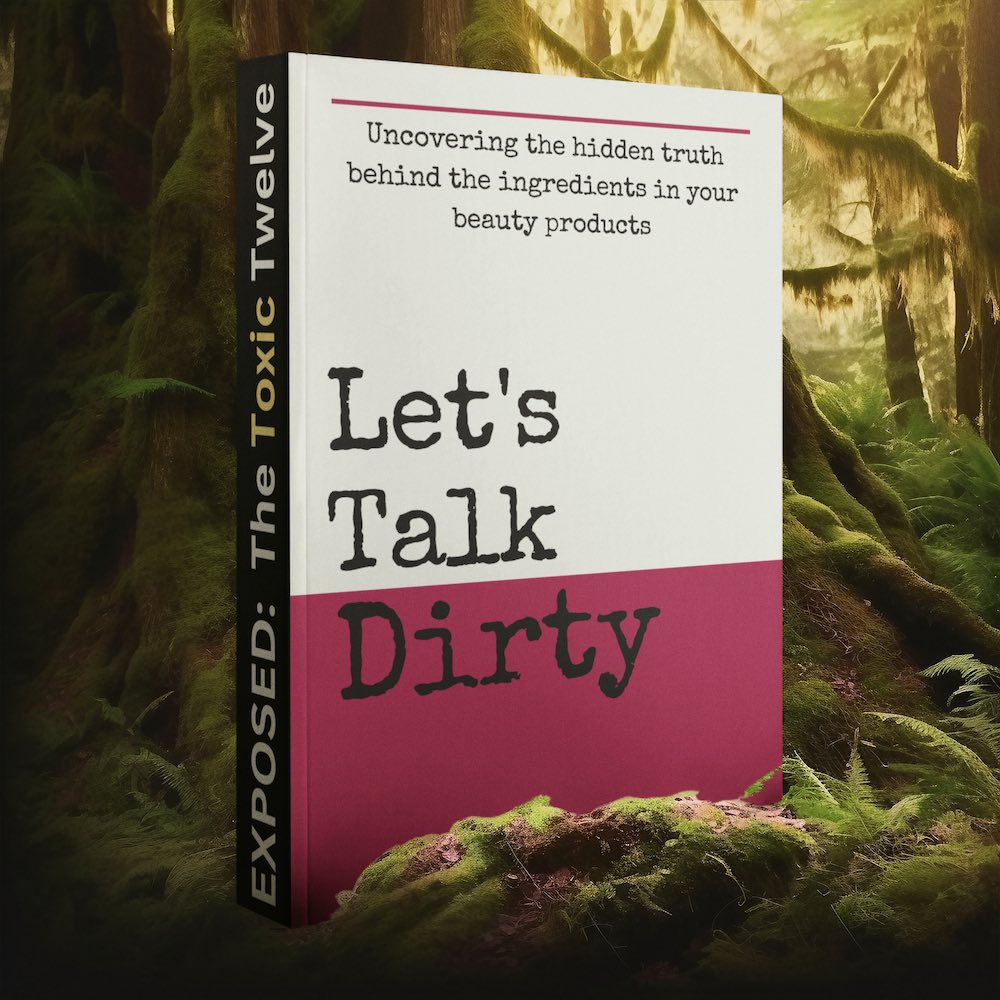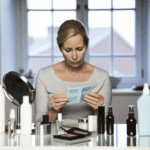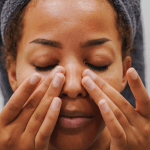Introduction to Toluene and Nail Products
Overview of Nail Product Usage
Nail products have become an integral part of beauty routines worldwide, with a diverse range of polishes, hardeners, and removers available for both home and salon use. Regulated by the Food and Drug Administration (FDA) as cosmetics, these products are designed to enhance the appearance of nails, protect them from damage, and in some cases, treat medical conditions like nail fungus. While nail products are deemed safe when used according to label directions, concerns arise due to the presence of potentially harmful ingredients that can pose risks if misused.
What is Toluene?
Toluene is a colorless, water-insoluble liquid with a distinctive smell. As a solvent, it is used in various industries and products, including nail products. Its primary function in nail polishes and other related items is to dissolve other components, improve application, and create a smooth, high-gloss finish. Despite its widespread use, toluene’s safety in consumer products, particularly in nail products, has been a subject of scrutiny and regulatory review.
The Role of Toluene in Nail Products
In the realm of nail care, toluene plays a crucial role. It acts as a solvent, helping to blend other ingredients into a cohesive solution, ensuring that nail polish applies evenly without separating or streaking. Additionally, toluene contributes to the quick-drying properties of nail polishes, which is highly valued by consumers for convenience. However, the use of toluene is being phased out due to health concerns, leading to a significant decrease in its presence in nail products over the years.
Initial Concerns about Toluene Exposure
Initial concerns about toluene exposure stem from its potential health effects. Short-term exposure to toluene vapors can cause headaches, dizziness, and irritation of the eyes, skin, and respiratory tract. Long-term exposure, particularly in occupational settings such as nail salons, raises questions about more serious health risks, including neurological, developmental, and reproductive effects. These concerns have prompted regulatory bodies and consumer advocacy groups to push for safer alternatives and stricter regulations to protect both consumers and salon workers from the potential hazards associated with toluene in nail products.

Do you have the most commonly used but toxic, disease bringing chemicals in your skin care? Many chemicals in skincare are hormone disruptors and make menopause symptoms worse.
Find out more…
Health Implications of Toluene
Short-term Effects of Toluene Exposure
Exposure to toluene, even in the short term, can have noticeable effects on health. Individuals may experience symptoms such as headaches, dizziness, and fatigue. In some cases, exposure can lead to skin irritation or dermatitis. Inhalation of toluene vapors, a common occurrence when using nail products, can result in respiratory discomfort, including coughing and shortness of breath. Additionally, toluene exposure can cause eye irritation and, in severe cases, temporary vision problems.
Long-term Effects and Chronic Exposure
Chronic exposure to toluene can lead to more serious health issues. Long-term inhalation or repeated skin contact can affect the central nervous system, potentially causing cognitive impairments and neurological damage. There is also evidence to suggest that prolonged toluene exposure may contribute to kidney and liver damage. Moreover, toluene has been linked to reproductive harm, with potential effects on both male and female fertility, and it may cause developmental issues in unborn children when pregnant women are exposed.
Specific Risks for Women’s Health
Women, particularly those of childbearing age, face specific health risks from toluene exposure. Research indicates that toluene can disrupt menstrual cycles and may lead to reproductive harm. For pregnant women, exposure to toluene can pose risks to the developing fetus, including congenital disabilities and developmental delays. Therefore, it is crucial for women to minimize their exposure to toluene-containing nail products, especially during pregnancy.
Toluene and Hormonal Imbalances
Toluene exposure has been associated with hormonal imbalances. It can interfere with the endocrine system, which regulates hormones responsible for various bodily functions. Disruption of this system can lead to irregularities in hormone levels, potentially affecting metabolism, growth, sleep, and mood. The implications of such imbalances can be wide-ranging and may exacerbate pre-existing health conditions.
The Connection to Aging Concerns
There is growing concern about the potential connection between toluene exposure and premature aging. Toluene’s toxic effects on the skin may accelerate the aging process, leading to early signs of aging such as wrinkles and loss of skin elasticity. Additionally, the stress that toluene places on the body’s detoxification systems, like the liver, can contribute to overall aging, as these systems are crucial for maintaining health and vitality.
In conclusion, while toluene plays a role in the performance of nail products, its health implications cannot be overlooked. Consumers and professionals alike should be aware of the potential short-term and long-term effects of toluene exposure, with particular attention to the specific risks it poses to women’s health, hormonal balance, and aging. Understanding these risks is essential for making informed decisions about the use of nail products containing toluene.
Regulatory Perspective on Toluene
Standards and Regulations in North America
In North America, the use of toluene in nail products is regulated by various federal and state agencies. In the United States, the Food and Drug Administration (FDA) oversees the safety of cosmetics under the Federal Food, Drug, and Cosmetic Act (FD&C Act). However, the FDA does not pre-approve cosmetic ingredients, with the exception of color additives. This means that toluene, as a solvent in nail products, is not subject to FDA pre-market approval. Instead, manufacturers are responsible for ensuring the safety of their products. Additionally, the Occupational Safety and Health Administration (OSHA) has established permissible exposure limits for toluene in the workplace to protect salon workers from potential health risks.
How Regulations Protect Consumers
Regulations are designed to protect consumers by setting safety standards for the use of toluene in nail products. The Consumer Product Safety Commission (CPSC) requires proper labeling of hazardous substances, including toluene, to inform consumers of potential risks. Furthermore, the Environmental Protection Agency (EPA) regulates air emissions of toluene, which indirectly impacts the indoor air quality of salons where nail products are frequently used.
Limitations of Current Regulations
Despite existing regulations, there are limitations in the current framework. The FDA’s lack of authority to require pre-market testing or approval of cosmetic ingredients means that the burden of safety falls on manufacturers. Additionally, the FDA cannot mandate recalls of hazardous cosmetics, relying instead on voluntary actions from manufacturers. This can lead to inconsistencies in product safety and delayed responses to emerging health concerns. Moreover, the permissible exposure limits set by OSHA may not fully account for the cumulative exposure experienced by salon workers or the potential for heightened sensitivity among certain populations.
The Role of Consumer Advocacy
Consumer advocacy plays a crucial role in addressing the gaps in regulation. Advocacy groups raise awareness about the potential risks associated with toluene and other hazardous chemicals in nail products. They also push for stricter regulations, better enforcement, and more transparent ingredient labeling. Through education and lobbying efforts, consumer advocates work to empower individuals to make informed choices and to hold the beauty industry accountable for the safety of its products.
Alternatives to Toluene in Nail Products
Natural and Organic Nail Product Options
As awareness of the potential hazards of traditional nail polishes grows, the beauty industry has seen a surge in the availability of natural and organic nail product options. These alternatives are formulated without the “toxic trio” of toluene, formaldehyde, and dibutyl phthalate (DBP), among other harmful chemicals. Brands have embraced the clean beauty movement, offering products that prioritize health without compromising on quality. Consumers can now choose from a variety of nontoxic nail polishes that are labeled as 3-free, 5-free, 7-free, 9-free, or even 10-free, indicating the absence of a specific number of hazardous substances.
The Efficacy of Toluene-Free Products
One of the primary concerns for consumers when switching to toluene-free nail products is whether these alternatives will perform as well as their traditional counterparts. The good news is that advancements in cosmetic chemistry have led to the development of toluene-free formulations that deliver comparable shine, color richness, and durability. Brands like Mineral Fusion, Zoya, and Smith & Cult have demonstrated that it is entirely possible to achieve a professional-quality manicure without the use of toluene and other toxic ingredients.
How to Identify Toluene-Free Products
Identifying toluene-free nail products is straightforward if you know what to look for. Consumers should scrutinize product labels for terms like “toluene-free” and check for the “free-from” claims, such as 3-free or 5-free. It’s also advisable to review the ingredient list, which should be readily available on the product packaging or the brand’s website. Additionally, resources like the Skin Deep database can provide valuable information on the safety and hazard levels of specific nail products and their ingredients.
The Cost of Switching to Safer Products
Transitioning to safer nail products is often perceived as a costly endeavor. However, the range of prices for toluene-free nail polishes is quite broad, making them accessible to a wide audience. While some premium brands may come with a higher price tag, there are affordable options like those offered by Mineral Fusion, which are priced competitively with conventional polishes. The long-term health benefits and peace of mind that come with using safer products can far outweigh the initial investment, making the switch a worthwhile consideration for health-conscious consumers.
In conclusion, the shift towards toluene-free nail products is a testament to the beauty industry’s ability to innovate and respond to consumer demands for healthier alternatives. With a growing number of options available, consumers can enjoy beautiful nails without compromising their well-being.
Do you know the 3 main ways how your body is exposed to harmful chemicals, which affect your hormones, your thyroid, health and beauty?
If not, it may be time to learn about them. It takes about 1-2 minutes.
We have a few suggestions how to avoid these silent health and immune system killers in our new guide.

Detoxifying from Chemical Exposure
Methods to Reduce Toluene Exposure
Minimizing exposure to toluene, particularly in nail products, is a crucial step towards safeguarding your health. To achieve this, start by reading the ingredients list on your cosmetics; if toluene or its synonyms like benzene, toluol, phenylmethane, or methylbenzene are present, avoid the product. Additionally, utilize resources like the Environmental Working Group’s Skin Deep® Cosmetics Database to assess the safety of your personal care items. Opt for products with clear, understandable ingredients, and be wary of vague terms like “fragrance,” which can mask the presence of harmful chemicals.
Detoxification and Cleansing Practices
Detoxification from chemical exposure can involve several practices. Engaging in a balanced diet rich in antioxidants can help your body naturally eliminate toxins. Foods such as leafy greens, berries, nuts, and seeds are excellent choices. Regular exercise increases blood circulation and promotes the elimination of toxins through sweat. Additionally, staying hydrated with clean, filtered water aids in flushing out unwanted substances from your system.
Lifestyle Changes for Chemical-Free Living
Adopting a lifestyle that reduces overall chemical exposure is beneficial for long-term health. This includes choosing personal care products that are certified organic or have a minimal ingredient list. In your home, opt for natural cleaning products and non-toxic materials for furnishings and renovations. Embrace a “less is more” philosophy, reducing the number of products you use daily, which in turn decreases the potential chemical load on your body.
Supporting Hormonal Balance Naturally
Chemicals like toluene can disrupt hormonal balance, leading to various health issues. To support your endocrine system, focus on a diet that includes phytoestrogen-rich foods such as flaxseeds and soy, which can help modulate hormone levels. Incorporating stress-reduction techniques like yoga, meditation, and deep breathing exercises can also help maintain hormonal equilibrium. Lastly, consider consulting with a healthcare provider about supplements that support liver function and hormonal balance, such as milk thistle or vitamin B complex.
Editor’s Note: The information in this article is intended for your educational use only; does not necessarily reflect the opinions of the Chopra Center’s Mind-Body Medical Group; and is not a substitute for professional medical advice, diagnosis, or treatment. Always seek the advice of your physician or other qualified health providers with any questions you may have regarding a medical condition and before undertaking any diet, supplement, fitness, or other health program.

Feeling You Have a Right to Safe Beauty & Fem Care?
If so, it may be time for a change. It starts with knowledge. We have a few suggestions in our new guides.
Consumer Empowerment and Education
Understanding Ingredient Labels
One of the first steps towards consumer empowerment in the realm of beauty and personal care is understanding ingredient labels. These labels can often seem like a foreign language, with complex chemical names and abbreviations. However, learning to decipher these labels is crucial for making informed choices. Here are some tips:
- Order of Ingredients: Ingredients are listed in descending order by weight. The first few ingredients usually make up the bulk of the product.
- Common Chemicals: Familiarize yourself with common harmful chemicals such as parabens, phthalates, and formaldehyde donors.
- Certifications: Look for certifications like “Cruelty-Free” or “Organic” which can indicate a product’s safety and ethical standards.
The Importance of Informed Choices
Making informed choices is not just about personal health, but also about contributing to a larger movement for safer products. By choosing products free from harmful chemicals, consumers can drive demand for healthier, more sustainable options. This, in turn, can influence industry standards and practices.
Resources for Continued Learning
Staying informed requires access to reliable resources. Organizations such as the Environmental Working Group (EWG) provide databases and tools to help consumers evaluate product safety. Additionally, consumer advocacy groups and online communities offer platforms for sharing information and experiences.
Community and Support Networks
Building community around the shared goal of safe beauty can amplify consumer voices. Support networks can take many forms, from online forums discussing non-toxic products to local groups organizing educational workshops. Together, consumers can advocate for change and support one another in making healthier choices.
Empowerment in the beauty industry begins with education. By understanding ingredient labels, making informed choices, utilizing resources, and building supportive communities, consumers can take control of their health and advocate for a safer, more transparent industry.

Popular Read: Endocrine Disruptors in Skincare: What You Need to Know
Conclusion: Balancing Beauty and Health
Summarizing the Impact of Toluene
The use of toluene in nail products has been a longstanding practice, primarily due to its effectiveness in ensuring smooth application and a durable finish. However, the health implications associated with toluene exposure cannot be overlooked. Short-term exposure can lead to headaches, dizziness, and fatigue, while long-term exposure poses more serious risks, including neurological damage and potential reproductive harm. Women, particularly those of childbearing age and nail salon workers, are at a heightened risk due to their frequent and prolonged exposure to nail products containing toluene.
The Future of Nail Product Safety
Regulatory bodies have established guidelines to limit toluene concentrations in nail products, but the enforcement and awareness of these regulations are not uniform globally. The future of nail product safety hinges on stricter regulations, improved product labeling, and greater consumer education. Innovations in product formulation are also paving the way for toluene-free alternatives that promise to deliver the same quality without the associated health risks.
Making Health-Conscious Beauty Decisions
Consumers are increasingly seeking beauty products that do not compromise their health. The demand for “5-free” and “7-free” nail polishes—formulas free from toluene and other harmful chemicals—is growing. By choosing these alternatives, consumers can enjoy the aesthetic benefits of nail products while minimizing their exposure to potentially hazardous substances.
Final Thoughts and Recommendations
It is imperative that consumers, manufacturers, and regulatory agencies work together to ensure the safety of nail products. Consumers should educate themselves about the ingredients in their beauty products and opt for safer alternatives whenever possible. Manufacturers are encouraged to innovate and reformulate products to exclude toluene and other harmful chemicals. Regulatory agencies must continue to monitor the safety of nail products and enforce regulations that protect public health. Ultimately, the beauty industry must evolve to prioritize health without sacrificing the quality and performance of its products.









